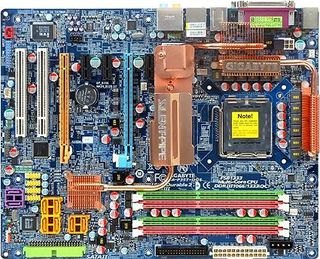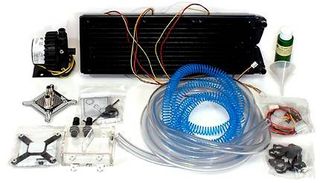Extreme FSB 2: The Quad-Core Advantage?
High-Speed Hardware
The E6750's low 8x maximum multiplier required a 520 MHz FSB to reach its maximum clock speed, in turn requiring a solid motherboard of similar capabilities. Gigabyte's GA-P35T-QD6 was retained from our previous Extreme FSB overclocking article along with its F3c BIOS revision; F3i Beta is now available.

Overclocking is always about achieving the best performance, so fast RAM is a requirement. Super Talent's DDR3-1600 is capable of speeds beyond 2000 MHz data rate, or latencies as low as CAS4, but not both at the same time. We'll discuss our choice of speed versus latency for each overclock setting, following the CPU overclocking results.

With motherboard and DRAM limitations out of the way, processor cooling is the only major concern left. Heat is the greatest limiting factor in high-frequency stability, but higher voltages are also needed to keep signal strength up as frequencies are increased. Since any added voltage also increases heat, no amount of cooling is too much. Swiftech's Apogee GTX LGA775 water block, triple 120 mm fan radiator, and MCP-655b water pump filled our needs.

Stay on the Cutting Edge
Join the experts who read Tom's Hardware for the inside track on enthusiast PC tech news — and have for over 25 years. We'll send breaking news and in-depth reviews of CPUs, GPUs, AI, maker hardware and more straight to your inbox.
Most Popular


